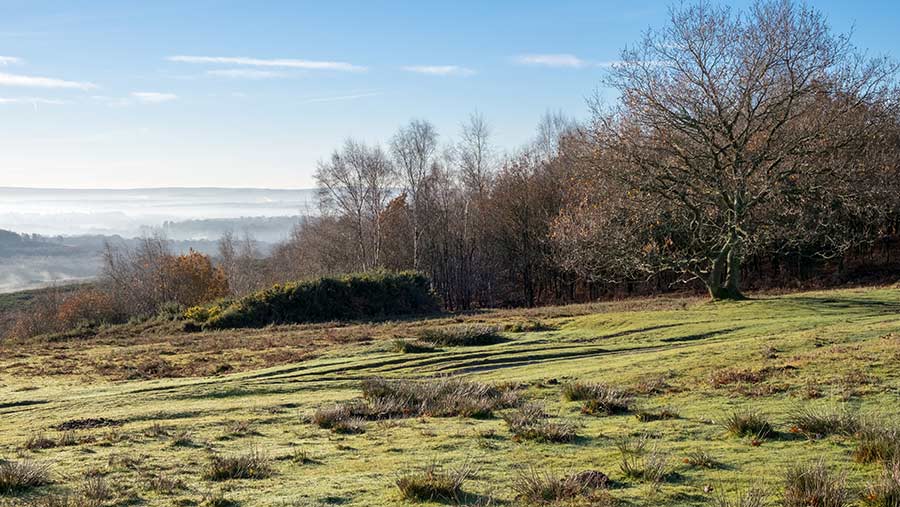Opinion: Why I’m bucking the trend and expanding my suckler herd
 The Sussex Weald © PhilipBird123/Adobe Stock
The Sussex Weald © PhilipBird123/Adobe Stock I’ve always taken a perverse pleasure in not running with the herd.
So it’s a delight to find myself planning to expand my suckler beef enterprise from 60 cows to 90 just as large numbers of my English and Welsh suckler beef farmer peers are planning to reduce theirs.
An NFU survey suggests that 40% of cattle keepers will reduce their herd sizes in the next year by 10%.
Perhaps, not surprisingly, respondents cite high energy prices (92%), feed prices (82%), cuts to BPS payments (79%) and high fertiliser prices (78%) as the four main reasons.
See also: Opinion – Stephen Carr predicts an improbable 2022 for farming
But loss-making sucklers are nothing new. My grandfather used to describe them as a “gentleman’s profession”, as losses could be written off against other sources of income or capital wealth.
My father used to warn that keeping a suckler cow was the equivalent of “taking money out of one pocket and putting it back in the other”.
Similarly, a neighbour once said to me: “If you are going to have all the bother of keeping a cow, Stephen, for goodness sake make sure it’s a dairy cow, so at least you stand some chance of making a profit.”
None of this is exactly encouraging, so why, when suckler cow margins are in such crisis, am I proposing to put so many maiden heifers to the bull this spring?
Well, as a primarily organic farmer, energy prices (apart from tractor diesel) are not something that trouble me greatly.
Feed costs don’t bother me much either, as organic grain is far too expensive to feed to cattle anyway.
And, obviously, fertiliser prices are of no concern to an organic farmer as the Soil Association (SA) won’t let me use any.
But I have something else up my sleeve as a suckler cow producer that I consider to be a trump card: a herd of pedigree red Sussex cows.
I only stumbled into breeding them by accident about 10 years ago as the SA would not allow me to run Limousin cattle on my organic land, as I already had them on my conventional acres.
So I plumped for a small herd of pedigree Sussex cattle, and I’ve been smitten ever since.
I don’t consider myself soft-headed, so when I say “smitten”, these must be animals that deliver me a profit.
How do they do that? The breed was developed to thrive on the “badlands” of the High Weald of Sussex, so they are incredibly resilient to an English winter and capable of maintaining condition on very plain grazing and hay.
They find a way of thriving whatever summer throws at them in terms of extreme wet or dry.
And when it comes to fattening, the breed really scores. They finish on a sniff of reasonable summer and autumn grass without concentrates.
The killing-out percentages are excellent, and what fabulous marbled meat they produce.
Even the finishing weights are great despite the breed’s reputation for being “too small” (if anyone doubts that, I have a recent deadweight ticket for a steer showing 509kg).
“Sussex wunt be druv” is the motto of my home county.
And it will take more than the cost price squeeze we’ve seen so far for me to be druv out of a Sussex suckler herd.

